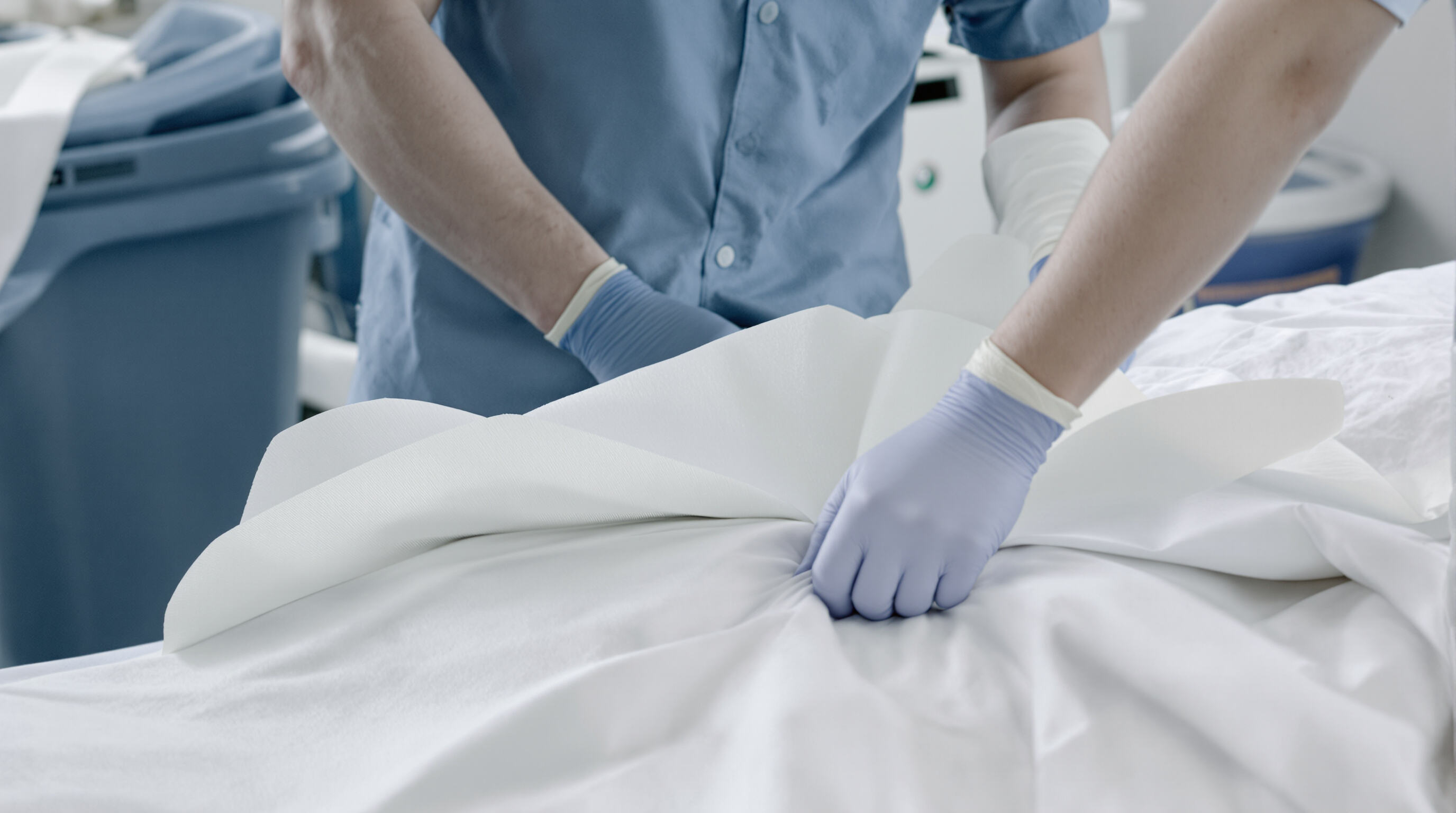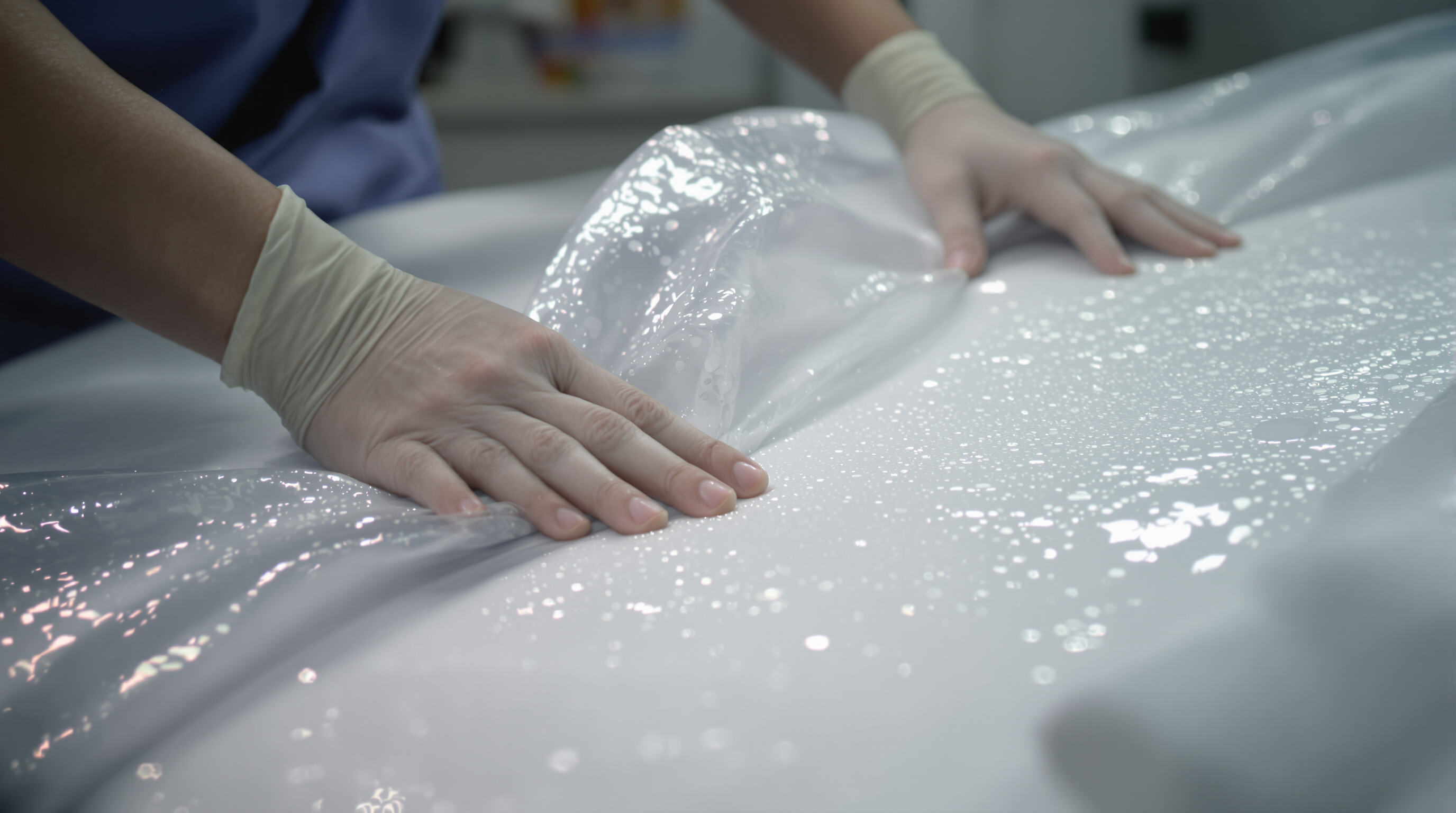Hygiene and Infection Control with Disposable Bed Sheets

Preventing Cross-Contamination in Healthcare Settings
Getting rid of bed sheets after one use tackles a big problem in hospitals where germs spread through dirty fabrics. Regular bed sheets need hot washing at least 60 degrees Celsius or hotter just to cut down on bacteria. But disposable ones get thrown away once they come into contact with blood or other bodily fluids from sick patients. This approach cuts out all the problems that happen when laundry isn't done properly. According to the CDC report from last year, around 12 percent of infections picked up in hospitals might actually come from improperly cleaned sheets. For those recovering from surgery or staying in intensive care units where people's immune systems are already struggling, switching to disposable linens makes a real difference. Studies show these throwaway sheets lower the risk of catching serious bugs like MRSA and C diff by nearly two thirds compared to regular washed bedding.
Single-Use Linens for Assured Cleanliness in Hospitals and Clinics
Disposable sheets provide clean surfaces free from contaminants, which addresses major problems with reusable systems. Research indicates that after industrial washing, around 15 percent of linens still have fecal bacteria remaining. That's pretty concerning when thinking about infection control. Another issue comes from laundry services that handle materials from multiple facilities. These services might bring in pathogens from different hospitals or clinics during transport and processing. In busy places such as ERs and outpatient centers where so many people pass through every day, using disposable linens makes sense for maintaining hygiene standards consistently. There's no need to worry about whether the laundry was done properly somewhere else, since each new sheet starts off completely clean.
Reducing Infection Risks: Disposable vs. Reusable Linens Debate
Reusable fabrics account for around 68% of what hospitals spend on linens, but this number goes way up once we factor in costs from infections. A recent study looked at several hospitals with about 200 beds each and discovered something interesting: places switching to disposable bedding saw almost 40% fewer infections linked to laundry practices every year. Sure, there's no denying the problem with all that extra trash, but newer biodegradable stuff like those PLA nonwoven materials might actually help. These break down roughly 90% quicker than regular plastic options, which means they're starting to close the gap between convenience and eco-friendliness in healthcare settings.
Time and Labor Efficiency in High-Turnover Environments
Eliminating Laundry Cycles: Reducing Workload in Healthcare and Hospitality
Disposable bed sheets eliminate all the hassle of washing, drying, and folding, which saves about 78% of the time spent on linen care in both hospitals and hotels according to Healthcare Facilities Journal research from last year. For example, a standard hospital with around 300 beds might conserve roughly 1.2 million gallons of water annually if they switch away from traditional reusable sheets. Hotels benefit too, gaining anywhere between 7 to maybe even 12 extra staff hours each week across their properties simply because there's no need anymore for storing, folding, or keeping track of inventory for these items. The savings just keep adding up when looking at all those behind-the-scenes operations that get eliminated.
Streamlining Bed Turnover in Hotels, Rentals, and Care Facilities
Using single use linens cuts down on bed turnover time about 40 percent, which means rooms get ready for new guests much quicker in places like vacation rentals and hospital recovery areas. Care facility workers have noticed around 22% fewer accidents when dealing with those heavy laundry carts. Housekeeping staff actually gain back roughly three whole hours each shift now. That extra time isn't wasted either it gets put towards better patient interactions or improving service quality for guests instead.
Cost and Operational Benefits of Reduced Linen Management
Facilities lower operational costs by 18–31% by avoiding capital investments in industrial washers, detergent stockpiles, and repair contracts. A 2023 case study found that hospitality brands achieved a $2.10 return on investment per disposable sheet, driven by reduced labor costs and increased room availability between guest stays.
Quick-Dry and Waterproof Protection for Mattress and User

Moisture-Wicking and Fast-Drying Properties for Comfort and Hygiene
Disposable sheets made with special fabric technology can pull sweat away from the body about 73% quicker than regular cotton mix fabrics, based on some recent sleep product testing from 2023. When someone has a fever or when people are staying somewhere hot and damp, this fast drying makes all the difference in their comfort level. Plus it helps stop those nasty bacteria from getting a foothold. Studies have found that these new materials cut down on bacteria buildup by around 42% when compared to old fashioned reusable bedding. The latest stuff uses non woven polypropylene blends that actually breathe pretty close to cotton at about 92% of its air flow, but they handle spills and liquids much better too, according to what textile engineers have been finding lately.
Waterproof Barriers for Incontinence, Caregiving, and Medical Use
Disposable sheets with their built-in polyethylene waterproof layer create a solid block against liquids, which makes them really important for people dealing with incontinence issues or recovering from surgery. Some hospitals did a study back in 2022 and found that switching to these single-use linens cut down on cross contamination problems by almost 90% compared to what happens with regular washable bedding. The newer models don't make that annoying crinkly sound anymore either, and they don't trap body heat like the old vinyl ones used to. Patients actually find them much more comfortable to lie on for long periods, which helps maintain their dignity throughout treatment.
Material Science: Polypropylene and Non-Woven Fabrics in Disposable Bed Sheets
Disposable sheets typically use a three-layer design to optimize performance:
- Polypropylene top layer: Moisture-wicking, hypoallergenic, and lint-free
- Absorbent core: Holds up to four times its weight in liquid–twice the capacity of cotton
- Waterproof backing: A 25-micron barrier that prevents leaks while allowing airflow
Non-woven fabrics lower production costs by 37% (Textile Manufacturing Journal, 2023) without sacrificing hygiene, making them ideal for urgent care clinics, vacation rentals, and other high-turnover environments.
Key Applications in Healthcare, Recovery, and Hospitality
Supporting patient care: Post-surgical and in-home medical recovery
In post surgical settings and at home for patients needing ongoing care, disposable bed sheets play a really important role because controlling infections can make all the difference in how someone recovers. Recent research from 2023 found that hospitals switching to single use linens saw around 72 percent fewer microbes hanging around their surgical areas. When looking after people with wounds or long term health issues, these fast drying disposable sheets cut down on the risk of leftover germs sticking around. They also stand up better against bodily fluids which means cleaner environments overall. Plus, this helps take some pressure off caregivers who already have so much on their plates throughout the day.
Enhancing guest experience with fresh, clean beds in hotels and short-term rentals
The hospitality industry has seen a real shift toward disposable linens as guests increasingly want to see clean, properly sanitized bedding when they check in. Recent data from early 2024 shows something pretty striking - almost nine out of ten hotel guests put sanitized bedding right at the top of their list of concerns. These pre-sealed disposable sheets actually solve a big problem for hotels and rentals alike. They eliminate the need for washing and drying, which is a huge plus during busy seasons. For vacation rental owners specifically, these disposables make life so much easier. Changing beds takes just around fifteen minutes instead of hours, meaning guests can check in on the same day without anyone having to worry about whether the bedding was properly cleaned between stays.
Case Study: Successful implementation in senior care and rehabilitation centers
When a rehab center in the Midwest started using disposable bed sheets back in 2022, they saved around 40 hours each week on laundry work. Pretty impressive cut down! What's even better is that skin problems dropped by nearly 60% among those residents who can't move much themselves. The staff thinks this has something to do with switching to these special sheets that don't irritate skin as much. All told, this change gave nurses and caregivers about 300 extra hours every month to spend directly with patients instead of dealing with laundry. Plus, everything still met those new CDC cleaning standards without any trouble at all.
FAQs
Why are disposable bed sheets used in healthcare settings?
Disposable bed sheets help prevent cross-contamination by being thrown away after use, ensuring a clean environment and reducing infection risks.
How do disposable sheets contribute to infection control?
By avoiding reuse, disposable sheets eliminate the risk of contamination and improper sanitation, lowering the incidence of infections associated with laundry practices.
What are the benefits of disposable sheets in hotels?
Disposable sheets enhance guest experience by providing sanitized bedding and reducing room turnover time, making check-ins more efficient.
Are disposable bed sheets environmentally friendly?
Newer materials like PLA nonwoven fabrics break down faster than traditional plastics, making disposable sheets more eco-friendly.
Do disposable sheets provide comfort and protection?
Yes, they feature moisture-wicking and fast-drying properties, along with waterproof barriers for added comfort and hygiene.


